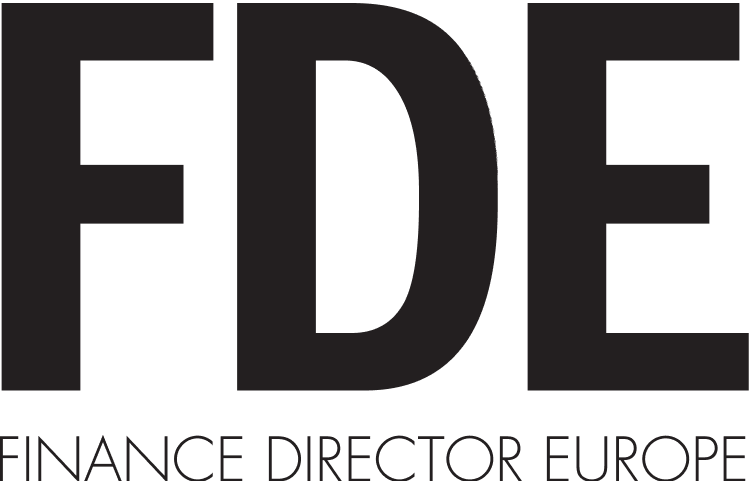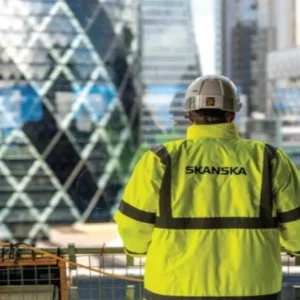
Heating technology has always been a big consumer of energy – an area that has become increasingly expensive and controversial for its contribution to greenhouse gas emissions. Making this equipment more environmentally friendly and more efficient is therefore a priority for equipment manufacturers and their customers alike.
Founded in Germany, back in 1874, Vaillant Group has become one of the leading innovators in hot water, room heating and cooling solutions globally, and its focus has long been on the production of high-efficiency products that save energy, conserve resources and enhance people’s quality of living.
“We have a clear company vision – taking care of a better climate – and the tone is set from the very top of our organisation,” says Dr Stefan Borchers, managing director finance and services at Vaillant. “Our ethical foundation is clearly communicated to all of our 16,000 employees, and we are all taking care of the climate.” This ethos drives not only the company’s product development cycle, but also its internal operations: the company has been climate-neutral since 2020.
“We really wanted to be climate-neutral as early as possible,” Borchers explains. “To achieve that, we worked for years to reduce the CO2 footprint from our own operations and processes, and we use green electricity as much as possible. To compensate our remaining emissions, we purchase CO2 certificates from a forestation project in Panama.
“Looking ahead to 2030, we want to further halve the CO2 output from our business operation and reduce the amount of compensation certificates we are buying,” he continues. “And we want to use certificates from our own forestation projects rather than existing ones.
This is not just about meeting our obligations because we are already going beyond that with our activities. It is about making sustainability our ethical foundation.”
Going green drives growth
Some companies view a commitment to sustainability as a cost that will inhibit growth. For Vaillant, however, it seems clear that it has become a fundamental principle for this thriving company.
In 2021, sales rose again by more than 20% to €3.3bn, with growth across all regions and across its entire product portfolio. Heat pump sales were, once again, up by more than 50% year-on-year, while the company sold a total of 2.5 million central heating units, further expanding its position as a global market leader.

“The main driver in this industry is renovation, which accounts for two-thirds of the market, rather than new builds,” Borchers emphasises. “A lot of CO2 emissions come from homes, so owners are replacing old oil or gas boilers with more efficient appliances or directly with electric heating systems. There are government incentives to push that forward, so there is some tailwind in the HVAC industry, which is benefitting from that trend.”
“We need entrepreneurial courage and investment in sales, R&D and capacity,” he continues. “In 2021, to support our growth, we spent €300m primarily on heat pump R&D and digitalisation, and we gained market share as a result. We have a higher market share in a growing market. We were, for example, one of the first companies to introduce a heat pump with a new environmentally-friendly refrigerant – R290 – so that it can also be used for renovation projects.”
The company still sells more gas boilers than heat pumps but is supporting the transition to electrified heating through its investments. A clear pillar of its strategy is to make headway in the electric heating market, which requires not only the right product offering, but also commitment from senior management. The company has set up a team from its sales, R&D, production and purchasing divisions to focus on new product development, leading to the development of the new Monoblock heat pump.
“We have built a new technology centre next to our production plant here at our headquarters in Remscheid, and we have invested a lot in increasing our R&D staff, especially in the area of heat pumps,” Borchers says. “You need the courage to invest before the sales come.”
Behind any investment in R&D and capacity lies the finance function, which has played a pivotal role in enabling Vaillant to not only ride the rising tide in the HVAC market, but also push ahead through innovation to gain market share.
“Conquering a growing market needs alignment among top management – not just the board but also the levels just below the board,” Borchers says. “They must be aligned on strategy and everyone must be committed to it. The finance team has to concentrate on the business and deliver on three major functions.”
“The first is business partnering, for example with sales, R&D and production, and close contact with the purchasing and supply chain teams,” he adds. “The second is to act as the economic conscience of the company and safeguard corporate governance when the company is making decisions fast, ensuring we adhere to processes and approval steps. The third is cash flow management and financing.”
“This is not just about meeting our obligations because we are already going beyond that with our investments. It is about making sustainability our ethical foundation.”
€3.3bn
In 2021, the company reported growing sales revenues of 20% with heat pump sales up more than 50% year-on- year.
Vaillant
A finance function fit for the future
As well as providing the funds to invest in growth, the finance function also has to handle risk management, but at Vaillant, the focus is not only on what could go wrong.
“Years ago, we established a risk and opportunity management system,” Borchers explains. “Both are important, not just risk. Currently, we have 150 individual risks on our list that are being monitored. They are not only reported, but also assessed and given probabilities, and a mitigation plan is provided.”

“The big risks – high geopolitical risk, and disruptions to the global supply chain – affect many industries,” he adds. “More specific to this industry, monitoring local and EU regulations on the heating industry, including initiatives to replace fossil fuels with other technologies, are important, but to me, that is an opportunity, not just a risk, as we move to renewable energy.” On climate risk, another global threat affecting every industry, Vaillant is not only looking at risk mitigation strategies, but also working hard to be a part of the solution.
This is reflected in its products, its operations and the financing of the company. As an example, Borchers and his colleagues see green finance as a must-have, not a luxury.
“You must not be afraid of change. You must grasp it and make the most of it.”
2.5m
The number of central heating units sold by the company in 2021.
Vaillant
The corporate ethos – taking care of a better climate – was introduced back in 2017. Even back then, the company had already been committed to its sustainability programme for six years.
“It was very clear to us, when looking at financing, that it had to be ESG-linked,” says Borchers. “For example, at the end of 2020, we signed a €300m syndicated loan with the interest rate tied to four ESG criteria. Green finance like this is a prerequisite, as investors and banks are asking for it.”
“We need green financing to have access to the whole finance pool,” he continues. “Also, many more green finance instruments are available. Previously, we did not need them, as we were cash-rich, but in the future we will see many more ESG-linked instruments, and we are having good discussions with banks on criteria and KPIs.” In keeping with its forward-looking approach to business, and its willingness to change, Vaillant has also invested in modernising how its finance function operates. Automation and digitalisation are key factors in ensuring that the finance team has the tools to deliver on the organisation’s strategic goals.
“Without digitalisation, finance today would not work anymore,” argues Borchers. “We have a shared service centre for accounting and reporting, and a payment factory for global payments. These would not work without automated workflows and integrated IT systems.”
The finance team is currently switching its reporting processes to SAP Analytics Cloud, and has set up automated micropayments for the company’s service department to enable it to handle very small payments. Modernising the finance function, enabling it to be a more effective partner for the rest of the business, and supporting it in its role as the economic conscience of the company, are all essential for the company to swim faster than the market currents and, above all, embrace change as the world moves towards electric heating.
“We are lucky to be in an industry that is growing,” summarises Borchers. “But you have to make decisions early to have production capacity and the right products for this transformation. There has been a similar transformation as in the automotive industry, and you need the courage to invest in that transformation and seize the opportunity, not just the risk. We don’t look at it as a threat to our traditional business but growth into a new one.”
“You must not be afraid of change,” he adds. “You must grasp it and make the most of it.”






